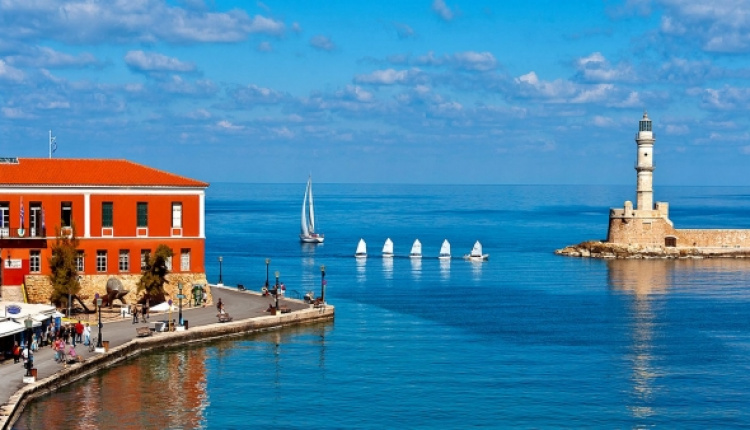8 Greek Cities Among Europe's 16 Oldest Cities
- by XpatAthens
- Wednesday, 09 March 2016

Europe is rich in geography and history which means that there are so many options for excellent travel experiences on the continent. Considering its small size, fortunately Greece is a country full of incredible places to explore and enjoy.
This article from the Telegraph tells us that 8 Greek cities are among Europe's oldest cities! Pull out your trusty maps (or plan your Google map route) and head to some of the oldest cities in Europe ~ they're right at your doorstep!
Argos, Greece
When did the earliest inhabitants settle? 5,000 BC
Árgos, in the north-eastern Peloponnese, 12km from Nafplio, has been inhabited, at least as a village, for some 7,000 years, and was a significant centre during the Mycenaean period (1600-1100 BC), although became most prominent during the reign of the tyrant king Pheidon, in the 7th century BC. In the Greek myths, the city was named after the son of Zeus and Niobe, and Homer's Iliad describes it as a renowned horse-breeding centre. Hera, the goddess of women and marriage, was particularly revered, and the Argives honoured her with a temple and an annual festival. Mycenaean tombs, the sanctuary of Aphrodite and a theatre with capacity for 20,000 people can be seen today.
Athens, Greece
When did the earliest inhabitants settle? 5,000 BC
The Acropolis has been inhabited since at least 5,000 BC, and Greek legend says that the city of Athens won its name after Athena planted an olive seed in a contest with Poseidon. With the resulting tree seen as more valuable than the water that Poseidon released from a rock with his trident, the goddess of wisdom, war and the crafts was named as the city's patron. The birthplace of democracy, the city has been held in such esteem that invaders have historically conquered the city, but not ransacked it, or enslaved its citizens. The Athenians defeated the Persians at the Battle of Marathon in 490 BC, after which the city entered its golden age, under the rule of Pericles. Socrates, Hippocrates and Sophocles all worked in its bounds, to be followed by Aristotle and Plato. Today, visitors can admire the Acropolis as well as Plaka, the city's oldest residential quarter, and Mt Lycabettus, the highest vantage point and a world away from any financial worries.
Chania, Crete
When did the earliest inhabitants settle? 4,000 BC
Excavations of the ancient city of Kydonia are taking place on Kastelli hill above the harbour at Chania on Crete. The ruins are thought to date from the Minoan period (2,100-1,100BC) and Kydonia probably came into its own around then, but traces of inhabitation at the site date back to the Neolithic period. Homer said that the city was one of the most important of the time, and frescoes, pottery and coins have all been unearthed on the site, which is open to view today. It is thought that the Saracens destroyed Kyronia in around 828, and the Venetians later built on it the settlement that would become modern-day Chania. The city is arguably Crete's most attractive, with its walls, beaches, museums, boats and all important tavernas creating an amiable atmosphere.
Patra, Greece
When did the earliest inhabitants settle? c. 3,500 BC
Excavations show that the area that is now the city of Patra has been inhabited since the Early Helladic period in the middle of the 3rd millennium BC. Like many other cities in Greece, it was later occupied by the Turks, while it was then set on fire by Muslim Albanians in 1779. After an earthquake in the 6th century, a castle was built on the side of Mount Panachaico, and to this day the city is divided into Lower and Upper districts. The modern city, on the coast in western Greece, has around 200,000 inhabitants.
Trikala, Greece
When did the earliest inhabitants settle? 3,000 BC
The ancient city of Trikka, founded around the 3rd millennium BC, lies underneath the modern conurbation, and was named after the nymph Trikke, daughter of Penaeus. The riverside location in central mainland Greece led to prosperity, although it fell to the Achaemenid Persians in 480 BC and later to the Romans. The Asklepieion - a healing temple - is one of the most ancient ruins of its kind, while the 17th century Koursoum Mosque is a more modern attraction.
Thebes, Greece
When did the earliest inhabitants settle? 3,000 BC
Evidence of buildings with rock-cut foundations, drains and mud brick walls shows Thebes has been inhabited for some 5,000 years, although the placement of the modern town on top of the ruins has made piecing together the history of the ancient settlement difficult. Found in central Greece, the city is important in Greek mythology, supposedly as the birthplace of Hercules and the terrorising ground of the Sphinx before her riddle was solved. Today, Thebes is a market city, and although some tourists come to see ruins, other bigger draws nearby such as Athens keep visitor numbers relatively low.
Chalcis (Halkida), Greece
When did the earliest inhabitants settle? At least 1,300 BC
Homer refers to Chalcis in the Iliad, written in about 762 BC, meaning that the city is at least 2,800 years old. Indeed, academic records say that the city was founded before the Trojan War, typically thought to have been between the 12th and 13th centuries BC, by an Ionic colony from Athens. It is the main settlement on the island of Euboea, where it sits on the Europis strait, a channel of water separating the island from mainland Greece. Although it was significant during the Roman era, nothing remains of the old city today, and the town is best known as a holiday resort for Greeks, for its agriculture, and its neighbouring cement factory.
To learn about all 16 European cities, please visit: Telegraph



